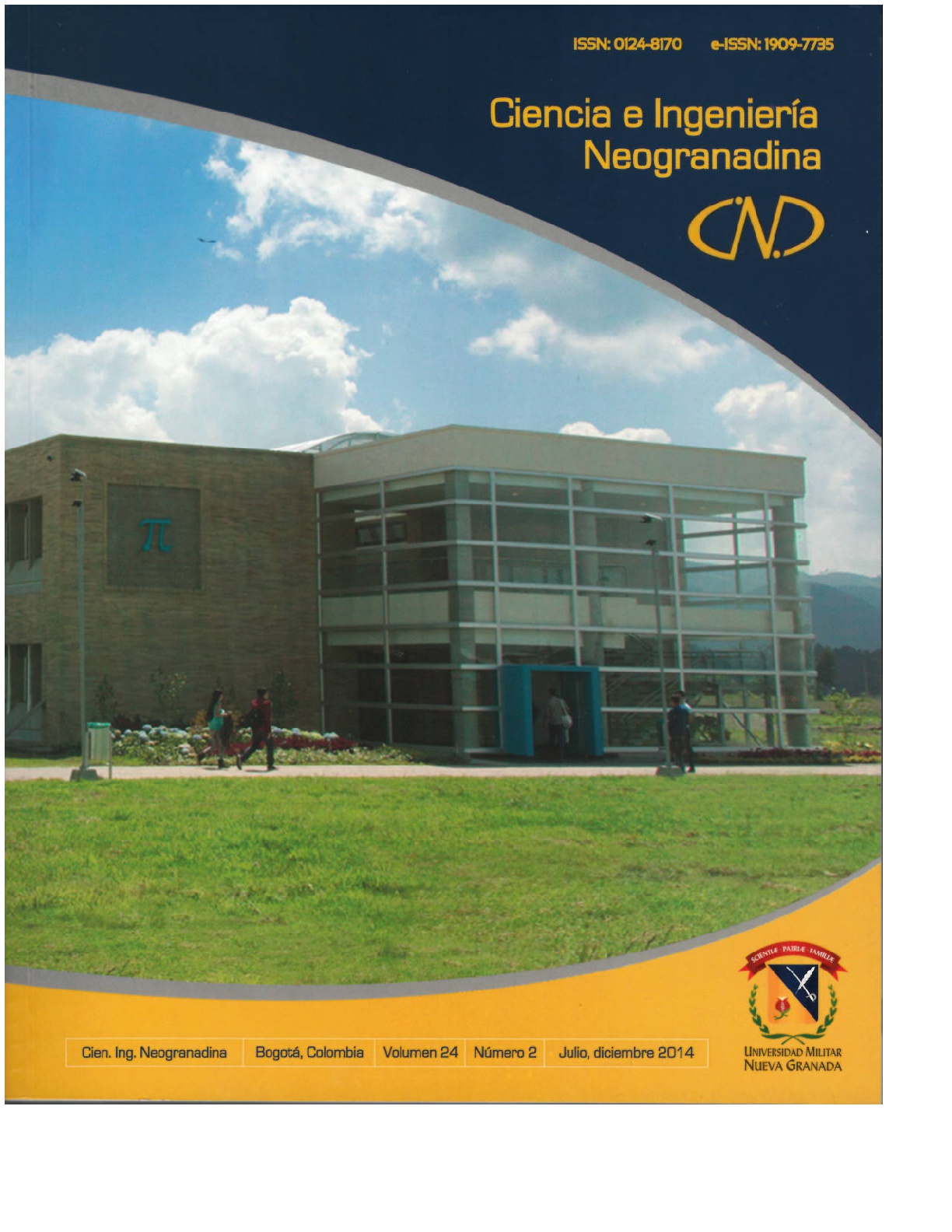Estimating HURST exponent and fractal dimension UV-VIS absorbance time series analysis
Abstract
The objective of this study is to estimate the exponent or Hurst parameter and the fractal dimension for UV-Vis spectrometry time series analysis, using principal component analysis (PCA). This analysis is performed to understand if the UV-Vis absorbance time series are persistent, anti-persistent, deterministic or white noise. Three different UV-Vis absorbance time series for three different study sites were used: (i) Salitre wastewater treatment plant (WWTP) in Bogotá; (ii) Gibraltar pumping station (GPS) in Bogotá; and (iii) San Fernando WWTP in Itagüí (south of Medellín). Each of these time series had an equal number of samples (5705). The dimensionality of the absorbance spectra, given their high correlation, was reduced using PCA and the first principal component was used for each study site. For the three study sites, this first principal component explained from 82% to 94% of the variability. The Hurst exponents were determined: (i) 0.8 for Salitre WWTP; (ii) 0.85 for GPS; and (iii) 0.89 for San Fernando WWTP. Using Hurst exponent values, for the three UV-Vis absorbance time series at same study sites, fractal dimensions were determined and a fractal dimension average of 1,153 was obtained. The three UV-Vis absorbance time series are persistent and have high self-similarity since the Hurst exponent is greater than 0.5.
Downloads
Languages:
esReferences
van den Broeke, J. (2007). On-line and In-situ UV/Vis Spectroscopy: Real time multi parameter measurements with a single instrument. AWE International, 55-59.
Gruber, G., Bertrand-Krajewski, J.-L., De Beneditis, J., Hochedlinger, M. & Lettl, W. (2006). Practical aspects, experiences and strategies by using UV/VIS sensors for long-term sewer monitoring. Water Practice & Technology, 1-8. doi:10.2166/WPT.2006020. http://dx.doi.org/10.2166/wpt.2006020
Rieger, L., Langergraber, G., Thomann, M., Fleischmann, N. & Siegrist, H. (2004). Spectral in-situ analysis of NO2, NO3, COD, DOC and TSS in the effluent of a WWTP. AutMoNet – 2nd IWA Conference on Automation in Water Quality Monitoring (pp.29-36). Viena: IWA Conference on Automation in Water Quality Monitoring.
Salgado, R., Pinheiro, H.M., Ferreira, F., Saldanha, J. & Louren, N. (2013). In situ UV-Vis spectroscopy to estimate COD and TSS in wastewater drainage systems. Urban Water Journal, 1-12. doi:10.1080/1573062X.2013.783087. http://dx.doi.org/10.1080/1573062X.2013.783087
Torres, A., Lepot, M. & Bertrand-Krajewski, J.-L. (2013). Local calibration for a UV/Vis spectrometer: PLS vs. SVM. A case study in a WWTP. Proccedings of 7th International Conference on Sewer Processes & Networks. Sheffield, Reino Unido.
Rodríguez, E. (2012). Hidrología de Hurst y Box Counting para el análisis de persistencia, volatilidad y riesgo en dos series de tiempo colombianas. Cuadernos Latinoamericanos de Administración, VIII(14), pp.41-50.
Mandelbrot, B. (1988). Los objetos fractales: forma, azar y dimensión. Espa-a: TusQuets Editores.
Quintero, O. & Delgado, J. (2011). Estimación del Exponente de Hurst y la dimensión Fractal de una superficie topográfica a través de la extracción de perfiles. Geomática UD.GEO, 5, pp.84-91.
Langergraber, G., Fleischmann, N., Hofstaedter, F. & Weingartner, A. (2004). Monitoring of a paper mill wastewater treatment plant using UV/VIS spectroscopy. IWA Water Science and Technology, 49(1), pp.9-14.
Shlens, J. (2009). A Tutorial on Principal Component Analysis. La Jolla, California, EE.UU.: Salk Institute for Biological Studies.
Alvarez-Ramirez, J., Echeverria, J. & Rodriguez, E. (2008). Performance of a high-dimensional R/S method for Hurst exponent estimation. Physica A: Statistical Mechanics and its Applications. doi:10.1016/j.physa.2008.08.014. http://dx.doi.org/10.1016/j.physa.2008.08.014
Carr. J. (1997). Statistical self-affinity, fractal dimension, and geologic interpretation. Engineering Geology, 48, pp.269-282. http://dx.doi.org/10.1016/S0013-7952(97)00042-2
Rehman, S. & Siddiqi, A. (2009). Wavelet based Hurst exponent and fractal dimensional analysis of Saudi climatic dynamics. Chaos, Solitons and Fractals, 40, pp.1081–1090. doi:10.1016/j.chaos.2007.08.063. http://dx.doi.org/10.1016/j.chaos.2007.08.063
| Article metrics | |
|---|---|
| Abstract views | |
| Galley vies | |
| PDF Views | |
| HTML views | |
| Other views | |












